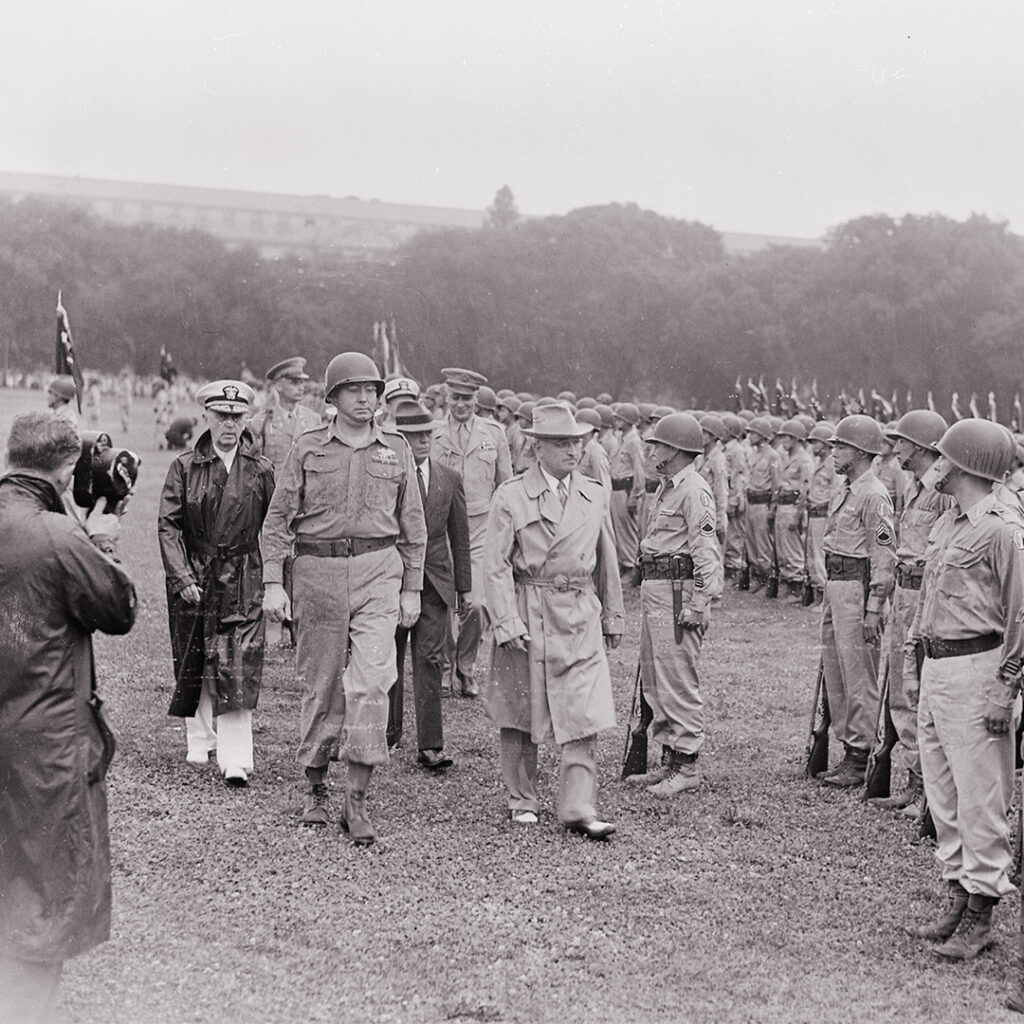The most decorated unit in American history started out as the enemy.
July 15, 1943: The 442nd Regimental Combat Team was activated in Camp Shelby, then July 15, 1946: Received a hero’s welcome in Washington D.C.
They were called “enemy aliens.”
They were incarcerated, stripped of their dignity, and told they couldn’t be trusted.
But when the U.S. Army created an all–Japanese American combat team in 1943, more than 12,000 Nisei (second-generation Japanese Americans) volunteered. Some came from Hawaii, where mass incarceration didn’t happen. Others signed up while imprisoned in America’s so-called “relocation centers.”
They came together at Camp Shelby, Mississippi — and clashed almost immediately. The Hawaiians and mainlanders had grown up in different worlds: one free, one behind barbed wire. They mocked each other with slurs. Hawaiian Nisei were called Buddhaheads, a twist on the Japanese word for pig (buta). Mainland Nisei were Kotonks, named for the dull sound their “hard heads” supposedly made when hit.






Concerned about this rift, War Relocation Authority head Dillon S. Myer organized a visit. Hawaiian soldiers would tour a mainland incarceration camp to see for themselves.
What they saw changed everything.
Behind the fences were American families — elderly grandparents, young mothers, children — all living in dusty barracks under armed guard. Some of their fellow soldiers’ families were among them.
The Hawaiian soldiers were stunned. They couldn’t believe these Kotonks were still willing to fight for the country that had locked them up. But they were. Overnight, that realization forged a deep bond. The 100th/442nd wasn’t just a fighting force. It became a brotherhood.
To gain acceptance, many lost their lives.
The 442nd Regimental Combat Team, which included the 100th Infantry Battalion, suffered:
- 650 killed in action
- 3,713 wounded
- 67 declared missing
In total, they experienced 4,419 battle casualties from September 1943 through the end of the war, and became known as the Purple Heart Battalion.





The most mistrusted — and the most decorated.
In just two years, the 100th/442nd earned:
- Over 18,000 individual decorations
- 9,486 Purple Hearts
- 4,000 Bronze Stars
- 560 Silver Star Medals
- 7 Distinguished (now Presidential) Unit Citations
- 21 Medals of Honor
They became the most decorated unit in U.S. military history for its size and length of service.
They adopted the Hawaiian mantra: “Go for Broke” — a gambler’s term meaning all or nothing. And they fought like it. With fierce determination and unshakable resolve, they earned respect on the battlefield. General Mark Clark called them “… some of the best damned fighters in the U.S. Army.”
And when they finally came home, the country noticed.
July 15, 1946 — President Harry S. Truman stood in the rain to welcome the 442nd to Washington, D.C., declaring:
“You fought not only the enemy, but you fought prejudice — and you have won.”





But predjudice back home was even tougher than the Germans.
All four Masuda brothers served during WWII. One of them, Kazuo Masuda, was killed in action as a member of the 442nd RCT in Italy. In 1948, when his body was brought back to Orange County, California, the local cemetery refused to allow his burial. Its restrictive covenants banned non-Caucasians.
It took national outrage and intervention from the U.S. government to reverse the decision — and give Kazuo a proper burial in the land he died defending.
President Truman’s words were powerful. But America’s journey to justice wasn’t over in 1946.
Is it today?